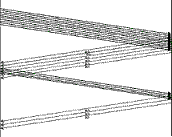Research

High Speed Transfer Control layer Protocol development
Contemporary network size is growing at exponential rate and the future network designs are characterized by high-speed to carry a wide variety of network services and traffic types. These demands create new challenges for network designers and researchers and since the TCP is the widely accepted protocols, our research is focused on designing better protocols supporting the High speed requirements and high connectivity

Network Simulator
Simulation has become the method of choice for many networking research problems. As new protocols are designed and tested, computer based simulations are used to validate the correctness of the new protocol, and are used to measure the performance of the new protocol under a variety of experimental conditions. Currently, the data communication networks have been experiencing tremendous growth over the last decade, in terms of both size and complexity. Consequently, evaluating the performance of such networks is becoming an increasing difficult problem. The traditional packet-level approach to simulating a network is to simulate the arrival, queueing, processing and departure of each individual packet at the various queues along a packetís path through the network flow to represent a traffic source taking a lots of time as well as at a greater computational cost. In the direction of computational power, using faster and more

Wireless Ad-hoc Sensor Networks
Reliable Query Reporting in Adaptive Sensor Networks Secure Distribution and Access in Distributed Sensor Networks Survivable Sensor Networks





